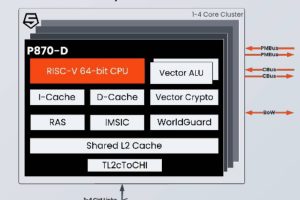
Its 12 64bit cores run at up to 3.8GHz, then two of these can be boosted to 4.3GHz.
The on-board GPU is rated at 4.6Tflop/s and supports DX12, and a separate neural processor (NPU) is rated at 45Top/s – the data type has not been specified in either case.
“Sensitive data can stay on your laptop for increased security with intelligence at the edge,” claimed the company. “Snapdragon X Elite features an integrated NPU, delivering transformative experiences for creativity, video conferencing, security and productivity assistants.” It is “capable of running generative AI large language models over 13bn parameters on-device with blazing-fast speeds”.
The AI engine supports Windows Studio Effects and other AI-accelerated applications.
Also included is an updated version of the company’s ‘micro NPU’ inside a low power sensing hub for security, login and privacy, said Qualcomm, “including the ability to wake the device when in sleep mode”.
Up to 64Gbyte of LPDDR5x memory will be supported at up to 8.533Gtransfer/s, and other memory interfaces include SD v3.0 and NVMe SSD over PCIe Gen 4.
Two displays can be supported up to 5K 60Hz and a host of video encoders and decoders are supported.
PCs including the IC are expected in the middle of next year.
 Electronics Weekly Electronics Design & Components Tech News
Electronics Weekly Electronics Design & Components Tech News




It is intriguing that Qualcomm went with ARM and not RISC-V, which has been heralded by the faithful as the best thing since before sliced bread. It probably doesn’t help much that SiFive, a large RISC-V actor, has just had a major job massacre. Qualcomm has stated an interest in RISC-V, have they gone cold?
Morning SEPAM
I am not sure that software these next-summer laptops are going to run, but going for Arm means that all Linux is immediately available with years of use behind it, and Android too if tablet-like use is envisaged.
Betting on thoroughly-stable operating systems for RISC-V, and programmes to go with them, might be a bit too risky for next summer?
Well, given that RISC-V is the direct descendant of MIPS and that it has been in development for well over a decade, one may then wonder, when is it going to be ready?
Linux already supports RISC-V, and that includes major distributions such as Debian.
Interesting – personal (limited!) knowledge updated 🙂
RISC-V has its place, but not in the main processor of a PC. Nvidia has it right where they use RISC-V as support processors to the main ARM cores, which in their case are often actually support processors to their GPU cores of course. So really it’s the modern day 8051.
The sheer amount of development effort spent on X86 and ARM over the years simply isn’t going to be matched by RISC-V, and in any case it’s not as efficent as the latest ARM cores due to some early design decisions, possibly needed to circumvent ARM patents.
ARM licencing fees aren’t that onerous so I really wonder why people make such a fuss. Apple have the volumes to change processors, but for the average company is it really worth changing your whole development process and throwing away years of libraries you know work just to save a cent off an ST Microelectronics or NXP MCU ?